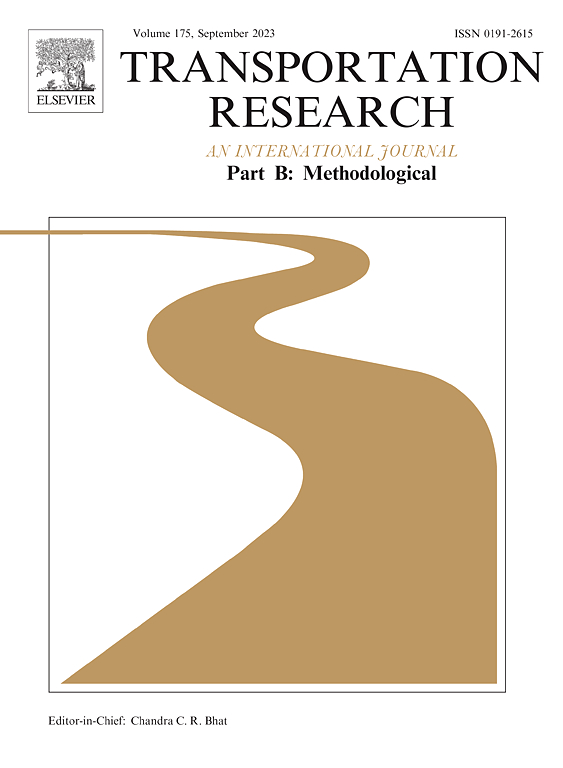Modeling the effects of new airport on a multi-airport system with air-rail integration service and heterogeneous passengers
IF 6.3
1区 工程技术
Q1 ECONOMICS
引用次数: 0
Abstract
This paper investigates the effects of new airport on a multi-airport system (MAS) with air-rail integration service and heterogeneous passengers. Vertical structure models are proposed to capture the interactions among the stakeholders: passengers, airlines, and rail operator. In the proposed models, passenger heterogeneity is reflected by a continuous value-of-time (VOT) distribution, and the total passenger demand is given. The critical VOTs dividing the passengers into different groups by travel mode are identified, and the distributional effects of new airport and air-rail cooperation on the heterogeneous passengers are examined. The findings show that the new airport and air-rail cooperation can benefit all passengers, and these benefits vary significantly across passengers. The poorest passengers gain the most from the air-rail cooperation. However, who gains the most from the new airport depends on the transfer time and cost for the new airport service. For a relatively low transfer time and cost, the mid-income passengers gain the most. Otherwise, the low-income passengers gain the most. At a high congestion level of the hub airport, introducing a new airport is more efficient in decreasing the social cost of the system than introducing the air-rail cooperation. Conversely, at a low congestion level of the hub airport, introducing a new airport may cause an increase in the social cost of the system instead. Consequently, the decision of investing in a new airport in an MAS should be carefully made.
新机场对具有空轨一体化服务和异质旅客的多机场系统的影响建模
本文研究了新机场对具有空铁一体化服务和异质旅客的多机场系统的影响。提出了垂直结构模型来捕捉利益相关者之间的相互作用:乘客、航空公司和铁路运营商。在该模型中,乘客异质性通过连续时间值(VOT)分布来反映,并给出了总乘客需求。确定了将旅客按出行方式划分为不同群体的关键vot,并考察了新机场和空铁合作对异质性旅客的分配效应。研究结果表明,新机场和空铁合作可以使所有乘客受益,并且这些好处在乘客之间差异很大。最贫穷的乘客从空铁合作中获益最多。然而,谁从新机场获益最多取决于新机场服务的中转时间和成本。在相对较低的换乘时间和费用下,中等收入乘客获益最多。否则,低收入乘客获益最多。在枢纽机场高度拥挤的情况下,引入新机场比引入空铁合作更能有效地降低系统的社会成本。相反,在枢纽机场拥塞程度较低的情况下,引入新机场反而可能导致该系统的社会成本增加。因此,在MAS投资新机场的决定应该谨慎做出。
本文章由计算机程序翻译,如有差异,请以英文原文为准。
求助全文
约1分钟内获得全文
求助全文
来源期刊
CiteScore
12.40
自引率
8.80%
发文量
143
审稿时长
14.1 weeks
期刊介绍:
Transportation Research: Part B publishes papers on all methodological aspects of the subject, particularly those that require mathematical analysis. The general theme of the journal is the development and solution of problems that are adequately motivated to deal with important aspects of the design and/or analysis of transportation systems. Areas covered include: traffic flow; design and analysis of transportation networks; control and scheduling; optimization; queuing theory; logistics; supply chains; development and application of statistical, econometric and mathematical models to address transportation problems; cost models; pricing and/or investment; traveler or shipper behavior; cost-benefit methodologies.

 求助内容:
求助内容: 应助结果提醒方式:
应助结果提醒方式:


